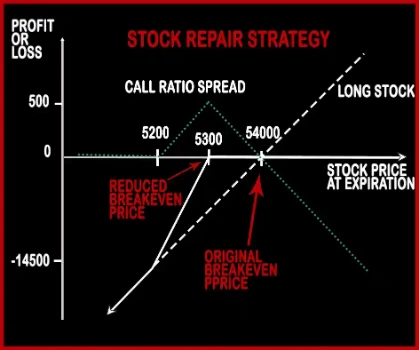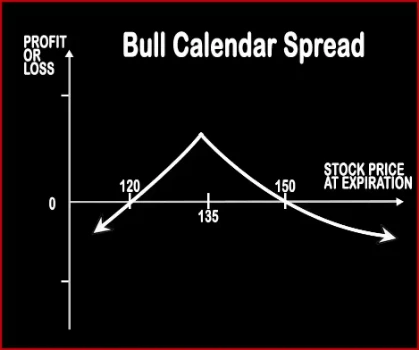Compare Strategies
| STOCK REPAIR | BULL CALENDER SPREAD | |
|---|---|---|

|

|
|
| About Strategy |
Stock Repair Option StrategyStock Repair Strategy is used to cover up for losses made on long stock position. After the long position suffered losses on stock price fall, a trader will implement this strategy in order to bring down the breakeven price and capping his further losses thereby increasing his probability of loss recovery. Suppose Mr. X has |
Bull Calendar Spread Option StrategyThis strategy is implemented when a trader is bullish on the underlying stock/index in the short term say 2 months or so. A trader will write one Near Month OTM Call Option and buy one next Month OTM Call Option, thereby reducing the cost of purchase, with the same strike price of the same underlying asset. This strategy is used when a trader wants to make prof .. |
STOCK REPAIR Vs BULL CALENDER SPREAD - Details
| STOCK REPAIR | BULL CALENDER SPREAD | |
|---|---|---|
| Market View | Bullish | Bullish |
| Type (CE/PE) | CE (Call Option) | CE (Call Option) + PE (Put Option) |
| Number Of Positions | 3 | 2 |
| Strategy Level | Beginners | Beginners |
| Reward Profile | Unlimited | Unlimited |
| Risk Profile | Limited | Limited |
| Breakeven Point | Stock Price when long call value is equal to net debit. |
STOCK REPAIR Vs BULL CALENDER SPREAD - When & How to use ?
| STOCK REPAIR | BULL CALENDER SPREAD | |
|---|---|---|
| Market View | Bullish | Bullish |
| When to use? | Stock Repair Strategy is used to cover up for losses made on long stock position. After the long position suffered losses on stock price fall, a trader will implement this strategy in order to bring down the breakeven price and capping his further losses thereby increasing his probability of loss recovery. | This strategy is used when a trader wants to make profit from a steady increase in the stock price over a short period of time. |
| Action | Buy 1 ATM Call, Sell 2 OTM Calls | Sell 1 Near-Term OTM Call, Buy 1 Long-Term OTM Call |
| Breakeven Point | Stock Price when long call value is equal to net debit. |
STOCK REPAIR Vs BULL CALENDER SPREAD - Risk & Reward
| STOCK REPAIR | BULL CALENDER SPREAD | |
|---|---|---|
| Maximum Profit Scenario | You have unlimited profit potential to the upside. | |
| Maximum Loss Scenario | Max Loss = Premium Paid + Commissions Paid | |
| Risk | Limited | Limited |
| Reward | Unlimited | Unlimited |
STOCK REPAIR Vs BULL CALENDER SPREAD - Strategy Pros & Cons
| STOCK REPAIR | BULL CALENDER SPREAD | |
|---|---|---|
| Similar Strategies | The Collar, Bull Put Spread | |
| Disadvantage | • Management required with all the positions. • Additional loss due to continuous decline in shares as downside risk remains unchanged. | • Limited profit even if underlying asset rallies. • If the short call options are assigned when the underlying asset rallies then losses can be sustained. |
| Advantages | • This strategy creates an opportunity to recover losses by lowering our breakeven. • No margin required. • No additional downside risk and costs nothing to put on. | • Limited losses to the net debit. • Enable trader to book profit even if underlying asset stays stagnant. • If the market trends reverse, cashing in from stock price movement at limited risk. |